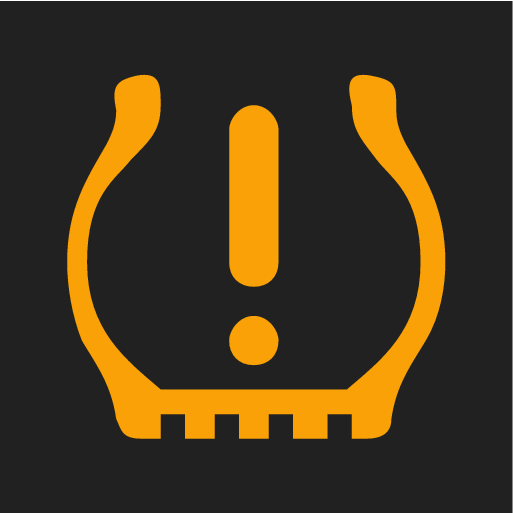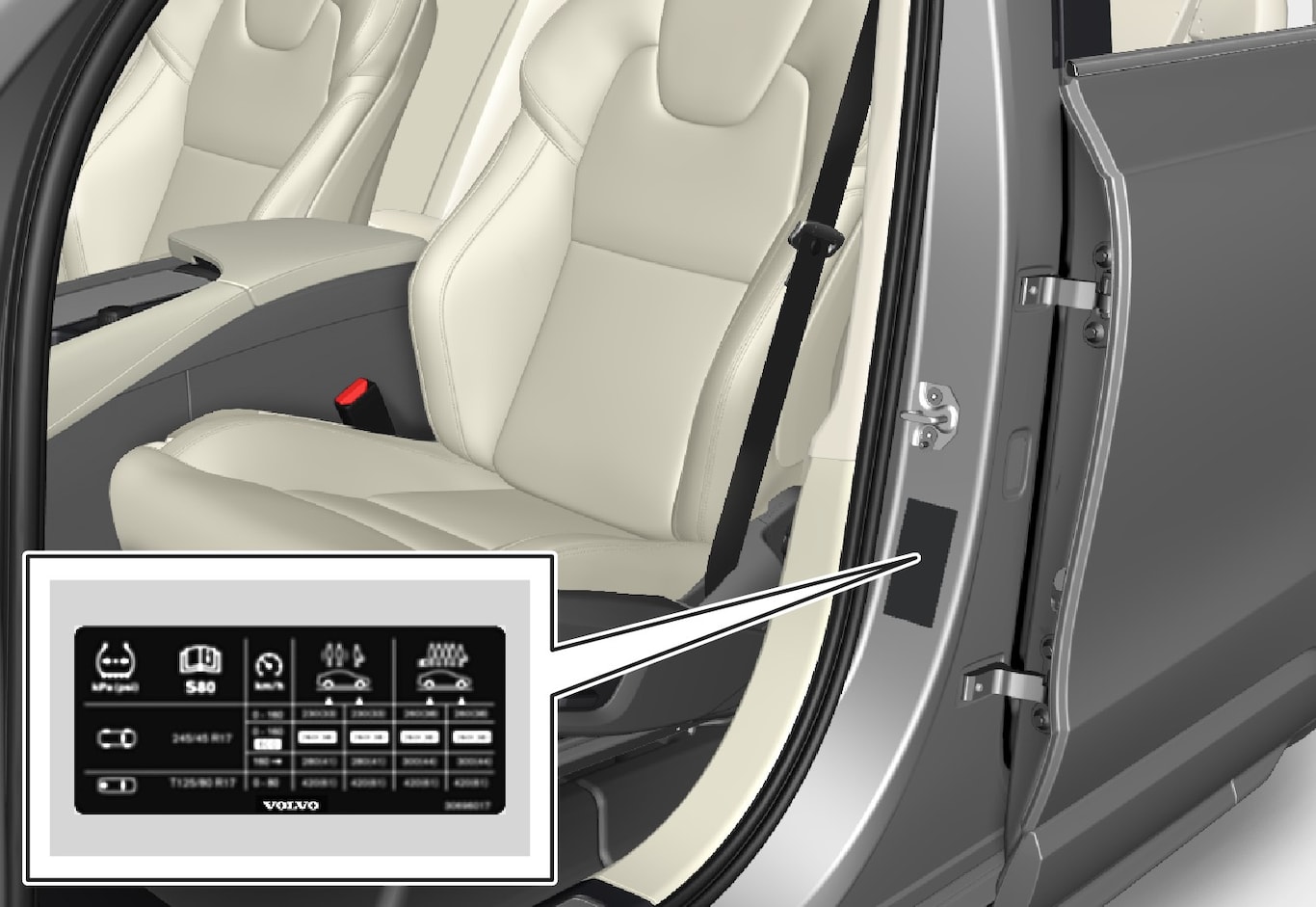Rectifying low tyre pressure with tyre pressure monitoring1
When the tyre pressure monitoring system, Tyre Pressure Monitoring System (TPMS), gives a warning, the tyre pressure in one or more of the car's tyres is too low.

Check and rectify the tyre pressure when the indicator symbol for TPMS is illuminated and the message Tyre pressure low or Tyre needs air now is shown.
Check the tyre pressure as indicated on the tyres with a tyre pressure gauge.
Inflate the tyres to the correct pressure as indicated on the tyre pressure label on the door pillar on the driver's side.

In some cases it may be necessary to drive the car for a few minutes at a speed above 30 km/h (20 mph) in order to clear the TPMS symbol and message.
Note
- The TPMS system uses a so-called compensated pressure value, based on both tyre temperature and ambient temperature. This means that the tyre pressure may differ slightly from the recommended pressures listed on the tyre pressure label on the driver's side door pillar (between front and rear doors). It may therefore be necessary to pump hot tyres to approx. 0.3 bar, alternatively 30kPa, above the recommended tyre pressure to get rid of a low tyre pressure message.
- To avoid incorrect tyre pressure, the pressure should be checked on cold tyres. "Cold tyres" means the tyres are the same temperature as the ambient temperature (approx. 3 hours after the car has been driven). After a few kilometres of driving, the tyres warm up and the pressure increases.
Note
- After a tyre has been inflated, always refit the dust cap in order to avoid damage to the valve from gravel, dirt, etc.
- Only use plastic dust caps. Metal dust caps can rust and become difficult to unscrew.
Warning
When inflating a tyre equipped with TPMS, hold the nozzle of the pump directly against the valve to avoid damaging the valve.
Warning
- Incorrect tyre pressure may lead to tyre failure, which could result in the driver losing control of the car.
- The system cannot indicate sudden tyre damage in advance.